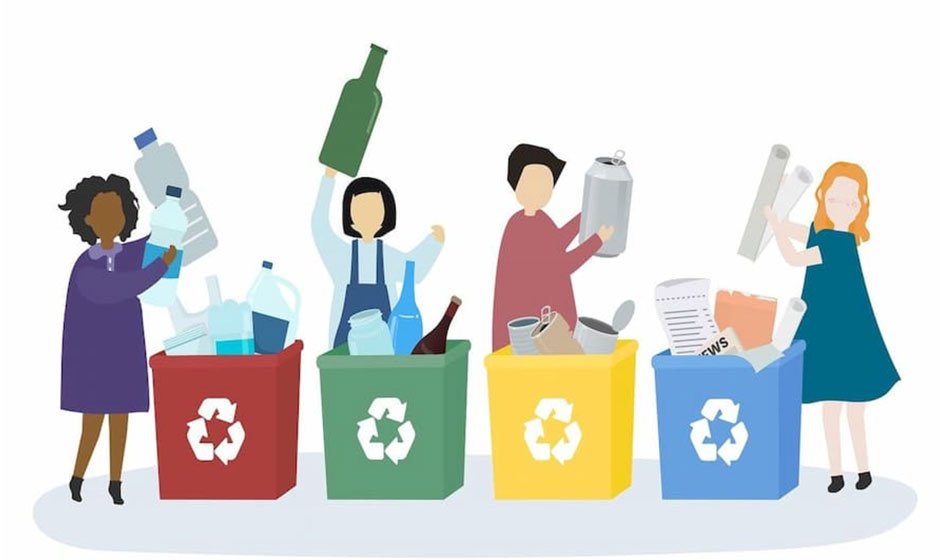Introduction
Promoting sustainable growth and lessening environmental effects depend on effective waste management. Managing waste properly becomes increasingly critical as consumption rises and the world population grows. Emphasising cutting waste, reusing materials, and recycling resources, sustainable waste management ultimately aims to reduce the environmental impact. Under main strategies, the sustainable waste management practices are discussed below:
Sustainable Practices for Waste Management
Waste Reduction at the Source
Reducing the generation of waste will help to manage it sustainably the most successfully. Source reduction is the design of less waste producing goods and procedures. Manufacturers may employ biodegradable materials, lightweight packaging, and sturdy products that cut the need for regular replacement. For each person, careful buying and avoiding single-use plastics and hire mini skip can greatly cut home and community waste.
Promoting Reuse and Upcycling
Reusing objects helps to lower demand for new goods and prolong their lifetime. Another approach to achieve this is upcycling, creatively transforming waste items into higher-value goods. Old furniture may be rebuilt, for example, or glass jars can be utilised for storage. Reuse is also encouraged by community projects such as thrift stores or swap events, therefore diverting used goods from landfills.
Comprehensive Recycling Programs
Foundation of sustainable waste management is recycling. Good recycling programs require separating waste at the source, teaching the public about recycling techniques, and funding contemporary recycling technology. By means of processing and reintroduction into industrial cycles, commodities including paper, glass, plastic, and metals help to lower the demand for virgin raw resources and thereby save natural resources.
Composting Organic Waste
A large share of municipal waste is organic waste, including yard waste and food leftovers. A natural process, composting turns organic waste into rich soil nutrients. This approach closes the loop on food systems, enhances soil health, and lowers methane emissions from landfills. Home composters and community projects allow people and businesses to get involved easily.
Implementing Circular Economy Principles
A circular economy moves beyond the conventional “take, make, dispose” paradigm toward one in which resources are maintained in use for as long as feasible. Products built for lifetime, repairability, and recyclability help companies cut waste and promote sustainability. Circular economy ideas are demonstrated by industrial symbiosis, in which one industry’s waste provides another’s raw material.
Waste-to-Energy Conversion
Converting waste into electricity presents a sustainable substitute when recycling and composting are not practical. From non-recyclable waste, technologies include anaerobic digestion, incineration with energy recovery, and gasification can provide biofuels or power. These techniques assist reduce landfill usage even if they complement rather than replace efforts at reduction and recycling.
Landfill Management and Methane Capture
Modern landfills can include sustainable methods for waste that cannot be repurposed or reclaimed. Designed landfills with leachate treatment systems and liners reduce environmental pollution. Furthermore, lowering greenhouse gas emissions and producing sustainable energy is the capture of methane gas from waste-related decomposition.
Encouraging Extended Producer Responsibility (EPR)
Extended Producer Responsibility rules allow producers to answer for the lifetime of their products, including disposal. EPR rules inspire creativity and lower environmental damage by pushing businesses to create green goods and control post-consumer waste. Take-back programs for devices and efforts at sustainable packaging are two examples here.
Public Education and Awareness
Effective waste management requires both personal and community as well as corporate involvement. Waste reduction, appropriate recycling, and the value of sustainable behaviours may all be taught to individuals via educational campaigns and seminars. Governments, companies, and educational institutions may work together to create an environmentally conscious culture.
Adopting Smart Waste Management Technologies
Including technology into waste-management systems increases sustainability and efficiency. Sensitive smart bins can track waste levels and maximise collecting paths, therefore lowering fuel use. At recycling plants, advanced sorting technologies improve material recovery rates. Policymakers can better plan waste management techniques and spot patterns using data analytics.
Supporting Waste Management Infrastructure in Developing Regions
Limited resources and infrastructure make sustainable waste management difficult for many underdeveloped countries to apply. Effective waste systems in these areas may be developed via international cooperation, financing, and information exchange. Sustainable techniques can become generally available by tackling worldwide waste issues.
Encouraging Community-Based Waste Initiatives
Effective sustainable waste management depends much on grassroots efforts. Local recycling cooperatives, zero-waste retailers, and community-led cleaning campaigns enable people to own their waste. These programs raise awareness and encourage cooperation, therefore transforming sustainability into a common objective.
Conclusion
A multifarious strategy needing cooperation among people, companies, and governments is sustainable waste management. Waste reduction, reuse, recycling, energy recovery, and appropriate disposal taken together will help society to lower environmental impact and promote a better future. Adopting these ideas not only helps to save resources but also advances environmental resilience, public health, and economic prosperity.










